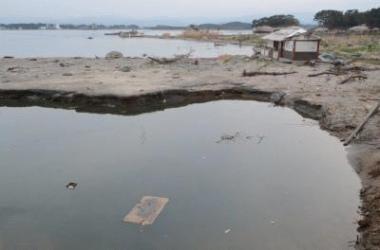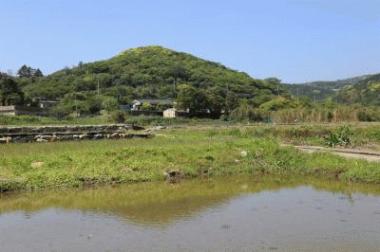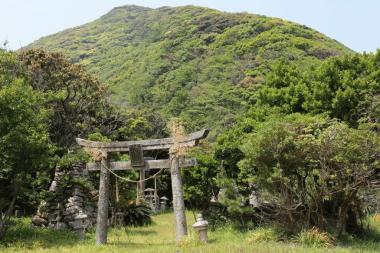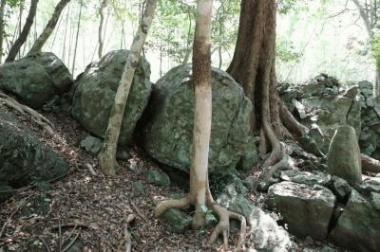Thinking Landscapes
- Chihiro Minato
- Artist, Photo-anthropologist
Professor, Department of Information Design, Tama Art University
Since about 2011, I have planned a series of exhibitions on the theme of landscapes. This series of exhibitions aims at changing landscapes through art. For the exhibitions I have invited various artists who are working in diverse media such as photos, paintings, videos or installations. The Great East Japan Earthquake led me to hold this series of exhibitions. I will never forget the day when I was in a stupor in front of the landscape which was drastically changed in a blink. Since the earthquake, I have visited devastated areas mainly in Fukushima Prefecture, recorded the landscape after the earthquake, continued dialogues with the local people, and thought about the relationship between humans and landscapes. The meanings of “fukei (風景, landscape),” a Japanese word, are becoming increasingly important in the context of the ongoing aftermath of the earthquake.
What winds carry
Commonly, what we inspired by in landscape paintings or landscape photographs is the human view of the land. This view was born in Western Europe and gradually matured from the 16th to the 19th centuries. It is accompanied highly intellectual work which converts a part of the world, framed by a window, to an image through vision theory such as composition or perspective.
The word landscape signifies “the shape of the land” linked with the groups of humans belonging to the land. This word is based on land use and the stakes rose around 1600 when the word began to be used as a word in English. And also, landscape painters lived in the politics of land and land use in that age. “Paysage,” a French word, has same origin of “pays (nations)” or “paysans (farmers)” in France. As such, these words conceptually include human society.
“Fukei (風景),” a Japanese word, has a different origin to above two words. Like the above words, the word “kei (景)” reminds us of the presence of a person who is looking at a subject. In Japanese, there is also a similar word, “kokei (光景).” However, the concept of “fu (風)” is neither found in “landscape” in English nor in “paysage” in French. The word, “fu (風),” primarily means winds in climate, but also derives a wide range of words like “fudo (風土, climate, culture or environment),” “furyu (風流 graciousness, elegance),” or “wafu (和風 Japanese style).”
Going back to ancient times, the shape of “風” is found in the same lines of “ootori (鳳),” a legendary holy bird. In ancient China, there were various types of Chinese characters that express winds although they are no longer used. It is said that Chinese people used different Chinese characters for diverse winds according to what was carried by the winds or what winds carry. The word “fukei (風景)” implicates great presences including the invisible universe not limited to living things like birds or insects. These differences between English and Japanese show the diverse relationships between humans and land.
In Western Europe, the genre of landscape paintings was established after the religious transformations. It might be possible to regard this genre as a new product like still life paintings which appeared on the scene along with the changes in the market economy. On the other hand Chinese and Japanese laid greater emphasis on inner relationships between nature and humans than outer relationships such as market economies. In this context, the concept of “ki (気)” is especially important. Needless to say, “ki” exists not only in nature, but also in human bodies. Calligraphers and painters were often considered as masters who could condition “ki” through exchanging feelings with nature. It is not necessary to polarize Western Europe and China/Japan; however, we should now recognize that the spiritual relationship based on humans and nature could be a key to thinking about landscapes.
Sanctuaries in Tsushima Island
Landscapes are a kind of “dialogue” provided by nature for humans. In other word, landscapes are a literary work of several volumes to be read. Let me think about my little experiences like “reading books” by giving an example of a landscape of a certain island.
Tsushima Island is located between Kyushu (Japan) and the Korean Peninsula, and has played the role of a gateway that conveys diverse culture from the continent to Japan. On this island, there are extremely special and interesting places when we think about landscapes both on the continent and in Japan. These places are generally known as “tendochi (天道地)” sanctuaries. On Tsushima island, even today, many islanders believe in “tendo shinko (天道信仰),” an indigenous belief, and they can realize their beliefs through the sanctuaries dotted throughout the island. Dense and dark forests and mountains are their religious objects, and shrines associated with “Tendo hoshi (天道法師)” were built on this island. These shrines are central to their beliefs.
At present, Tsutsu (豆酘) in Shimoagata-gun and Sago (佐護) in Kamiagata-gun are the main places of worship. At Takuzuma Shrine (多久頭魂神社) in Tsutsu, Mt. Tatera (龍良山) has been a religious object. In front of the shrine, there are rice paddies where akamai (赤米), considered to be a wild ancestor of Japanese rice, is cultivated. Every year, harvested akamai rice is packed in straw bags, and these respective rice bags are honored as religious objects called “tendo.” At the end of the year, the rice is processed into rice cakes, and distributed to families in the village. These rice cakes are worshipped as the god of the year. As such, ancient rice worship is seen in the akamai ritual of Takuzuma Shrine.
On the other hand, Mt. Tendo (天道山) has been a religious object at Amanotakuzuma Shrine (天神多久頭魂神社) in Sago located on the north side of the island. There is no shrine building at the shrine, but, two sets of structural remains may be found there. For most of the shrines associated with “tendo shinko,” the mountain is the religious object and the shrine is the place for rituals. Also, on the north side of Tsushima, the ritual of heaping up stones is held annually on a festival day. We can see old structural remains near the windy coast.
Since the 13th century various traditions associated with the tendo shinko have been formed to a current style under the influence of foreign religions such as Tantric Buddhism or Buddhism. However, the beginning of tendo belief can be said to be nature worship. We can feel nature worship from the landscapes of this island. The rich greenery of the island seen from the beginning of spring to summer is fascinating. Especially in the season of new green leaves, young leaves are bathed in a golden light. The mountains are highly likely to be sanctuaries like Mt. Tatera or Mt. Tendo. In these sanctuaries, public access has not been allowed, and there is a strict prohibition on removing even a branch of a tree or a blade of grass.
In Japan, forestation has been promoted from the Showa era (1926-1989), and native evergreen broad-leaved forests were cut down and exotic species were artificially cultivated. Such artificial cedar forests are also found on Tsushima Island. The dark color of the cedar forests is very visible from a distance. Many people say that bird singing is hardly heard there and the cedar forests are considered to be scary places. This made me think about the wonderful evergreen broad-leaved forests on Tsushima Island: what would have happened to them without tendo shinko?
For the coming wisdom
In general, the worship of nature such as trees or stones is called animism. People find character in trees or stones and divinize them. This term was popularized by Sir Edward Tylor in the 19th century. Sir Edward, the father of anthropology, thought that animism was a religious form at a low level followed by indigenous people, and it was in the course of evolutional process to high level religions as represented by Christianity. Today, such a colonialistic view is roundly criticized. But, being away from social evolutionism, animism is not a low level religion. I think it can offer us various hints as wisdom or thoughts.
After the Great East Japan Earthquake, we often hear about a schema, “culture and nature.” This schema shows a dichotomy between the two: diverse human culture was damaged by a natural disaster. However, are they opposed to each other? Is it reasonable to divide them into two in the first place? Rather, I think humans and nature have been closely associated with each other from their respective beginnings, and have organized a network. Then, “fu or kaze (風),” or “ki or ke (気)” would express this relationship.
For example, the divinity in rice is distributed through the ritual. This is an example of human-nature networking. Nature worship like tendo has left traces throughout Japan, and the worship can be wisdom for keeping a landscape for a long time. The “long time” is longer than a lifespan of a person, productive activities or a reign. In order to maintain a certain land for a long time, humans have to exercise wisdom over a short time period in contrast to the cyclical timespans of nature. I have observed diverse relationships between humans and nature all over the world including in the equatorial belt, and noticed that this wisdom is not dichotomic, but contributes to maintaining a complex bond in a landscape where humans are involved.
It is necessary for us to think hard in order to maintain this bond in a society deeply damaged by the Earthquake. When humans think about nature, nature also thinks about us. Thinking Landscapes might be a kind of school for learning future animism.
Profile of Chihiro Minato
Prof. Chihiro Minato is an artist and photo-anthropologist. He serves as Professor at the Department of Information Design, Tama Art University, Japan, and researcher at the Institute for Art Anthropology. Based on his civilization theory dealing with subjects such as crowds and memories, he has conducted a wide range of activities including works of research, artworks, exhibitions, publication, curation and so on. His book “Kioku (in Japanese, memories)” won the Suntory Prize for Social Sciences and Humanities. He also won the Ina Nobuo Award for the exhibition entitled “Shimin no iro (in Japanese, The color of citizens).” In 2007, he served as Commissioner at the Japanese pavilion of Venezia Biennale. Prof. Minato’s recent books in 2012 include: “Void e no tabi (in Japanese, Journey to the void,” “Geijutsu kaikiron (in Japanese, Theory of art recurrence),” and “Basque nanairo (in Japanese, Basque in seven colors).” A series of exhibitions “Fukeiko (Thinking Landscapes),” jointly organized by Prof. Minato and Satoshi Koyama Gallery, is currently being held, and will also be shown in Ulan Bator, Mongolia in September 2013.














